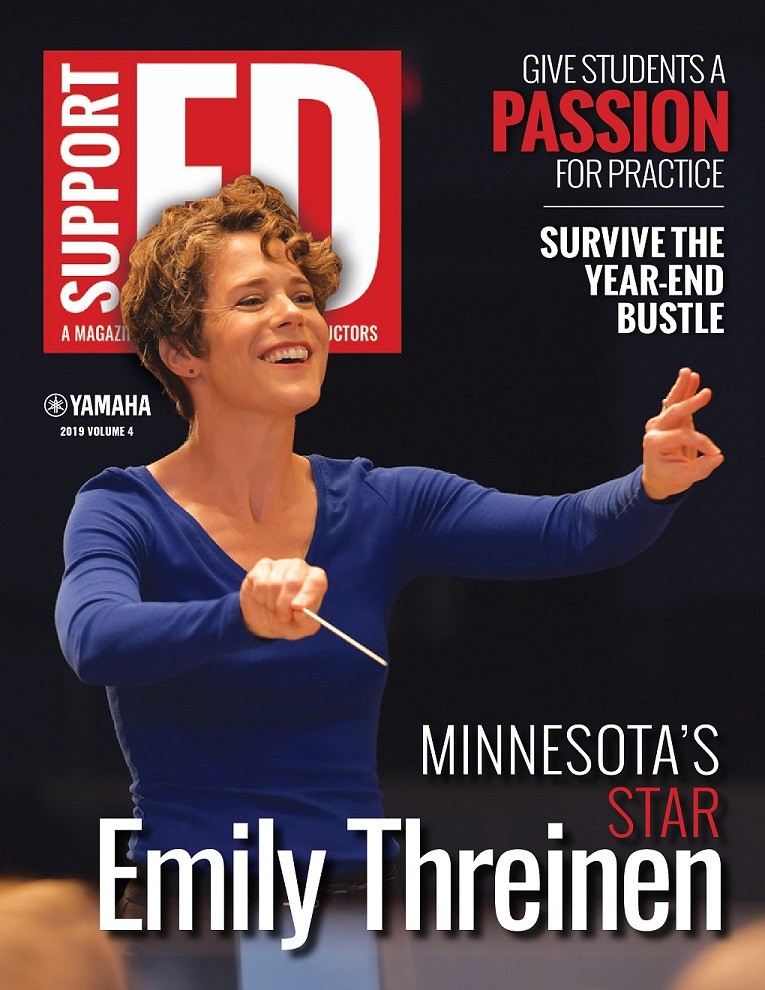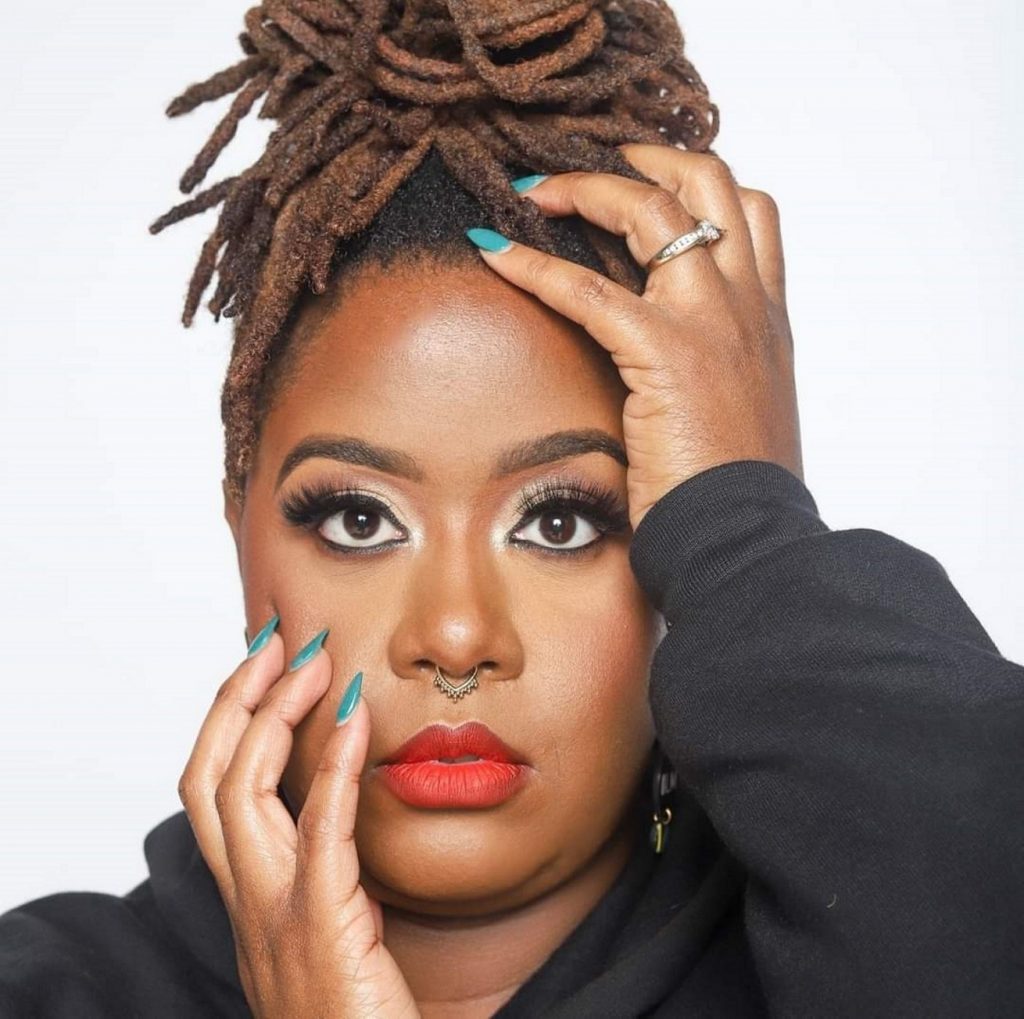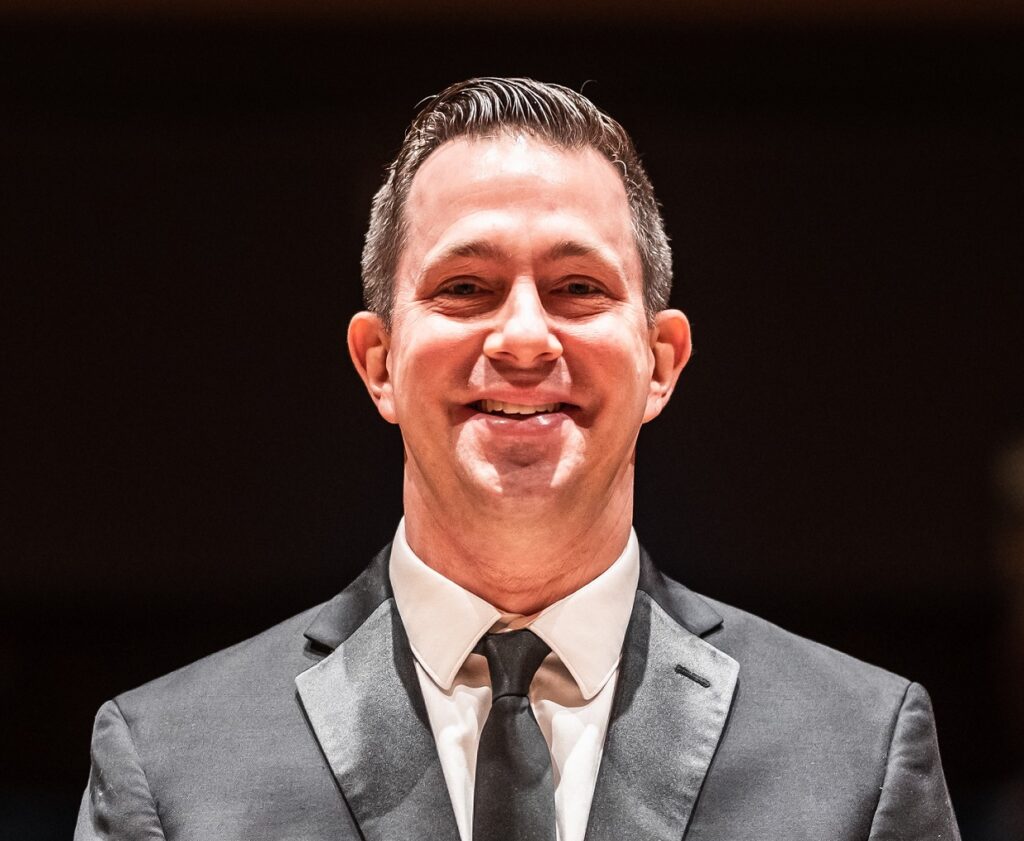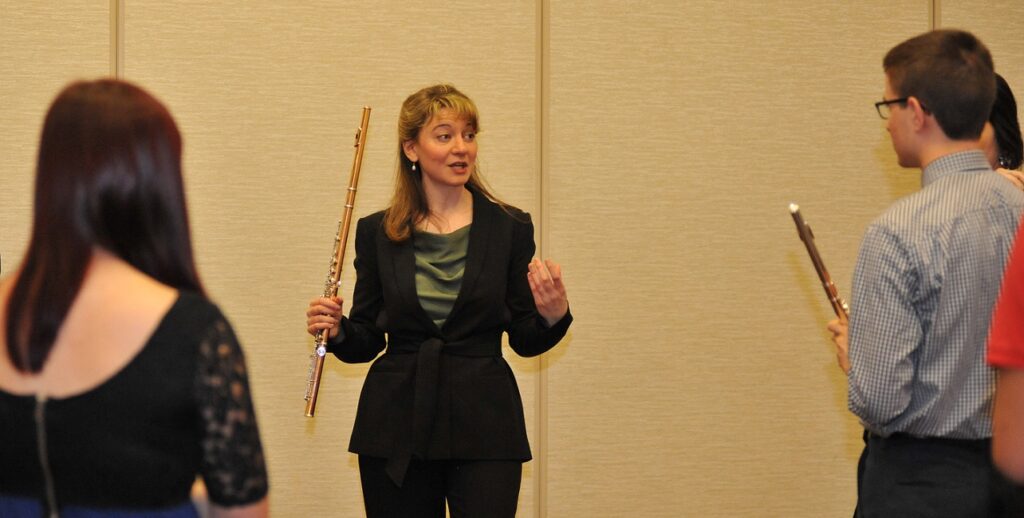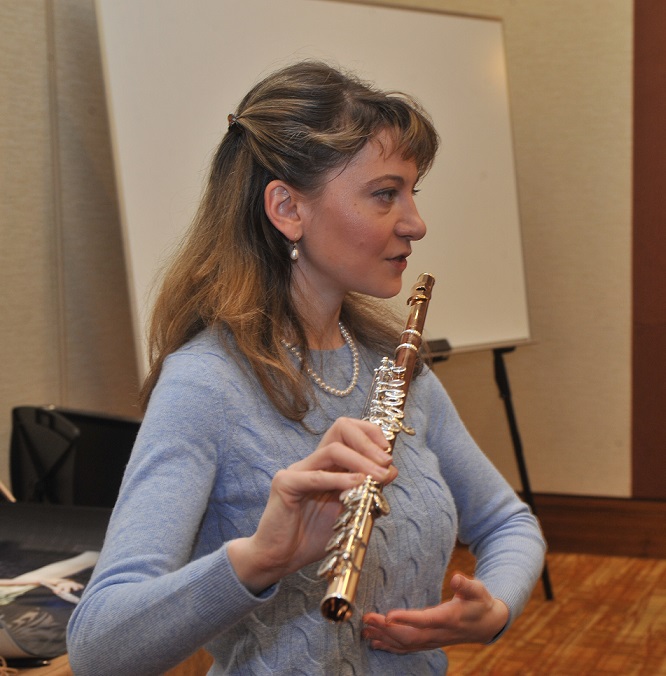Tagged Under:
Emily Threinen: Music’s North Star
Acclaimed conductor Emily Threinen returns to Minnesota, the North Star State, as a professor and guiding light for students looking for support and excellence.
As part of her True North approach to instructing, Dr. Emily Threinen sees opportunities to abandon the stick.
A Bright Light

Often, Threinen makes teaching rather than conducting her priority. “If an ensemble is having trouble hearing and playing with a steady internal pulse, a beautiful stick technique will likely not solve the problem,” she says. “With developing ensembles, I think much less about my conducting and much more about my teaching. Certainly, the two work together, but if the musicians need attention on fundamentals, especially related to hearing beyond themselves, I have to put my own desire to conduct aside to ensure we are achieving what is most important in the moment.”
Threinen has officially gone from student to teacher — full circle at her alma mater, no less — but she’s not done learning. Her style is creating a positive teaching approach, preferring the carrot to the stick.
“I have high standards for my ensembles and for myself, and I try to show this through my enthusiasm, joy and passion for the work and not with disappointment that it doesn’t sound as excellent as it could,” Threinen says. “Certainly, there are rehearsals where I get frustrated, but I try not to use my frustration as a motivator. I have discovered that sometimes this can make the learning process more about my goals and less about the students, the composer or the music. Finding ways to stay positive in my teaching is one aspect that keeps me growing.”
This thinking furthers Threinen’s view of what it means to be a music teacher. “At the core, I believe the role of a music educator, conductor and music advocate is that of a servant,” she says. “We serve those who are in our classrooms, ensembles, community, institutions and beyond.”
Threinen’s passion and overall approach hasn’t gone unnoticed by her peers. “She is tenacious in pursuing, uncovering and unleashing the potential within the players to realize what she has imagined the music to be,” says Threinen’s friend, Dr. Travis J. Cross, the chair of music at the University of California, Los Angeles.
Directional Aid
 A positive approach doesn’t mean ignoring details or problems. While Threinen’s delivery is direct and efficient, she focuses on being encouraging, clear and purposeful with communication.
A positive approach doesn’t mean ignoring details or problems. While Threinen’s delivery is direct and efficient, she focuses on being encouraging, clear and purposeful with communication.
She is not afraid to tell students when the work isn’t their best. With developing ensembles, she shares how musicians can practice to improve and what specifically needs to be addressed instead of just saying that a passage doesn’t sound good or accurate.
“My goal is to create a productive, engaging and professional environment,” Threinen says. “I don’t like to have tension in the rehearsal space for me or for the ensemble. I’m quite intentional in my verbal directives, and I try never to make an individual feel bad about themselves. I strive to be positive and encouraging with every group I stand in front of, regardless of ability, age or experience.”
When it comes to working with students with varied capabilities, teachers and conductors have a tough decision of where to set the bar. “I try not to set my standard to the lowest or highest denominator; I shoot for three-fourths of the way up,” Threinen says. “I don’t want to make our collective goals unattainable, but I want to push all of my students and ensemble members beyond what they think they can do. People tend to rise when they’re challenged.”
For those students at the top, Threinen encourages teachers to help them find ways to branch out and excel outside of school by taking private lessons, auditioning for competitions and honor ensembles, and performing with regional youth or community ensembles. When she was a high school teacher, Threinen worked with high-achieving students through chamber ensembles and the International Baccalaureate music program, which focused on critical and independent thinking. She also mentored students to use their active listening and other skills to identify composers, cultures, periods and styles in the Minnesota Music Listening Contest.
Threinen knows firsthand the importance of teachers, particularly in the arts. She credits her high school music teacher, Tim Smith, for encouraging her to pursue a career in music. “I can’t thank all of my music teachers enough or express how much they changed my life,” she says. “I wouldn’t be the same person if it wasn’t for each of them. It’s important that all teachers and professors know that they make an incredible impact on students’ lives, often in ways they may never know.”
Pivotal Points
When it comes to working with students at different stages in their musical careers, Threinen uses her own experiences as a guide to decide when to focus on inspiration and when to look at the realities and challenges of the job market.
With high school students, Threinen encourages the love of music. “When I work with high school students, I try not to think about the responsibility of them getting a job,” she says. “My excitement for the art form is what I always try to impress upon them. The practicality around a career in music is real, but I aim to put that second to inspiration. With this age, I believe that fostering desire through encouragement is essential.”
Younger students have their own challenges. Threinen says it takes special and talented people to teach elementary and middle school. “There are so many other things younger students are thinking about at this stage when comparisons and self-identities start to take shape,” she says. “In middle school, music programs start emphasizing assessment and competition, which can change students’ perception of the essence of music and ensemble participation. Wouldn’t it be great if all music and ensemble programs could focus only on the music and the individuals creating it?”
With college-age musicians, Threinen remembers what she learned: Success has no singular definition and looks different for everyone. “At the end of college, I started to see that there was more variation in what success looked like than I originally believed,” Threinen says. “I have learned that there are infinite ways to be successful, and a career in music has many paths. I am practical with my collegiate students on the realities of the highly competitive job market, but I also try to encourage an open and opportunistic mindset.”
Steadfast and Sure
Threinen considers herself a lifelong student. As a music educator, she continues to use the skills that she has learned along her journey, including adaptability to varied situations.
“We all have our own barometer of what we will accept in a situation,” Threinen says. “Certainly, I have expectations, especially with musical elements in a score, but I also try to be flexible. I walk into every environment and try to adapt my expectations to what is in front of me. Each day in my job, each guest conducting engagement and each opportunity to teach is a chance for me to modify, refine and learn.”
Threinen adds, “What do I give to the music community? I give me as I am in the moment. I share my passion for music, my joy of teaching and my care for the people I am with. I do my best to be wholly present from our first introduction to the last double bar.”
When it comes to the trajectory of her career as well as those she nurtures, Threinen is proof that through hard work, dedication and flexibility, stars — North and otherwise — can be made, not just born.
Emily Threinen At A Glance
- Bachelor’s: Double major: Clarinet Performance and K-12 Instrumental Music Education, University of Minnesota
- Master’s: Conducting, emphasis in Wind Band, Northwestern University
- Doctorate: Conducting, emphasis in Wind Band, University of Michigan
- Previous positions:
- Director of Bands, Associate Professor of Music, and Artistic Director of Winds and Brass at Temple University
- Director of Bands and Assistant Professor of Music at Shenandoah Conservatory of Shenandoah University;
- Director of the Duke University Wind Symphony
- Director of the Concordia University Wind Ensemble
- Conductor of the Dodworth Saxhorn Band in Ann Arbor, Michigan
- Director of Bands and Instrumental Music at Harding Senior High School
Photos by Rob Shanahan for Yamaha Corporation of America
This article originally appeared in the 2019 V4 issue of Yamaha SupportED. To see more back issues, find out about Yamaha resources for music educators, or sign up to be notified when the next issue is available, click here.










